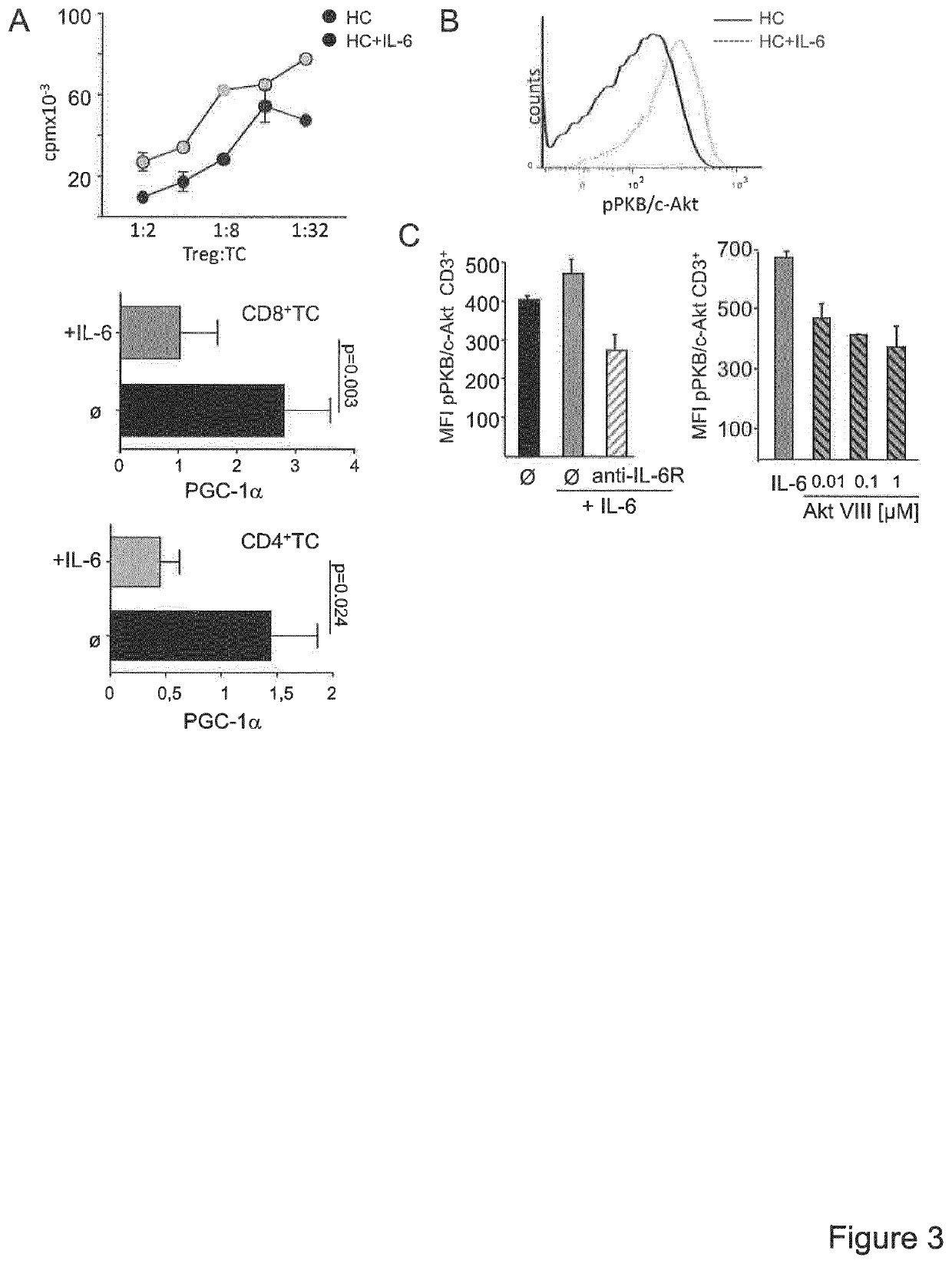In-vitro methods for the detection of autoimmune diseases or conditions
a technology for autoimmune diseases and in-vitro detection, applied in the field of in-vitro methods for the detection of autoimmune diseases or conditions, can solve the problems of inability to distinguish between defective treg and treg-resistant t-cells in patients with autoimmunity
- Summary
- Abstract
- Description
- Claims
- Application Information
AI Technical Summary
Benefits of technology
Problems solved by technology
Method used
Image
Examples
Embodiment Construction
[0018]Advanced Gene Profiling of Treg-Resistant CD4+ T-Cells from MS Patients
[0019]Since T cell activation processes are transcriptionally regulated, the inventors postulated that Treg resistance of MS T-cells is reflected by specific transcriptional changes in the gene expression profile. The inventors therefore analysed expression profiles of TCR stimulation-responsive genes of Treg-resistant MS CD4+ T-cells compared to Treg-sensitive HC (healthy controls) CD4+ T-cells (FIG. 1A). A number of 3,512 stimulatory response genes were identified in MS and 2,472 genes in HC T-cells with an altered expression upon stimulation (FIG. 1B). Subsequently, advanced bioinformatic analysis of upstream regulators was performed with data sets representing these differently regulated genes. It was the aim to determine hereby upstream regulators specifically activated or inhibited in T-cells of MS patients or HC (FIG. 1C). Additionally, to further curtail the group of upstream regulators, molecules w...
PUM
| Property | Measurement | Unit |
|---|---|---|
| time | aaaaa | aaaaa |
| Treg-resistance | aaaaa | aaaaa |
| resistance | aaaaa | aaaaa |
Abstract
Description
Claims
Application Information
 Login to View More
Login to View More - R&D
- Intellectual Property
- Life Sciences
- Materials
- Tech Scout
- Unparalleled Data Quality
- Higher Quality Content
- 60% Fewer Hallucinations
Browse by: Latest US Patents, China's latest patents, Technical Efficacy Thesaurus, Application Domain, Technology Topic, Popular Technical Reports.
© 2025 PatSnap. All rights reserved.Legal|Privacy policy|Modern Slavery Act Transparency Statement|Sitemap|About US| Contact US: help@patsnap.com



